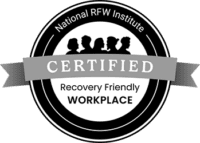Identifying Pathways to Effective Discharge Planning
Proper patient discharge is critical to a successful transition home following an inpatient stay. Communication, delivery and consistency of message is crucial — empowering patients with easy to understand, digestible information enables them to adhere to discharge protocols, reducing unnecessary readmissions and appointments and increasing overall patient satisfaction.
Below is a list of the 7 top barriers to effective discharge planning, and how to remedy the issues to create a successful transition.
System Policies or Issues: Staffing Shortage and a Lack of Resources
Staffing shortages. Having a lack of staff or an overburdened workforce results in a disconnect in communication. If physicians are overworked, they are unable to communicate with nurses and other staff, who in turn are unable to communicate to the patient. Consequently, patients can be uneducated in their care plan.
Lack of resources. Some facilities have too few beds, and thus they rush through the discharge process to create a level of turnover that is sustainable. Facilities place the necessary constraints on the length of stay for some of their patients to make their resources work for as many people as possible. Unfortunately, this may not be the ideal discharge plan for many.
Patients as a Factor: Willingness and Missed Instructions
Willingness. Willingness to participate in the discharge plan can be a factor in the success of the plan itself. Some patients try to prolong their stay or put off leaving the hospital if they know they do not have a caregiver or someone to help them.
Missed instructions. Many patients simply do not follow the care instructions they are given upon discharge. A recent study showed that patient discharge notes are often written for education levels too advanced for many patients to understand. Compounding the issue, patients can become confused when their memory is clouded by medication, the stress of being in the hospital, or by their illness.
Social Factors: Transportation, Family Support and Finances
Transportation. Some patients may not have a convenient mode of transportation to get to and from appointments or the hospital.
Family Support. When a patient is not well, support from family members or friends can be critical. Without a helping hand, following discharge protocol can be difficult.
Finances. If a patient experiences a time lag between discharge and receiving financial assistance from social programs, it can prevent them from an otherwise smooth recovery.
A Successful Transition
When a patient has access to an effective discharge plan, they are more likely to understand the management of their injury or illness, the admission rate will decrease, and overall patient satisfaction will increase.
Per the Joint Commission, seven elements must be in place for a safe transition to occur from one health setting to another. They include:
- Leadership support
- Multidisciplinary collaboration
- Early identification of patients/clients at risk
- Transitional planning
- Medication management
- Patient and family action/engagement
- The transfer of information
There are many possible strategies for post-discharge planning, but the important part is that hospitals are identifying and implementing ways to most effectively reach their unique patient population. GoMo Health Concierge Care® Transition Support helps to alleviate the problems surrounding the transfer of information. Patients are empowered with remote care management tools, enabling them to make positive health and wellness decisions via “in-the-moment” engagement, extending the facility’s reach and actively involving patients in their continuum of care. Some of the messaging that patients can receive includes:
- Educational messages
- Motivation
- Assessments
- Appointment scheduling
- Reminders
- Proactive health care information
To learn more about GoMo Health’s Transition Support solutions, click here.
To speak with us and schedule a demo, click the button below.






Find Us Online